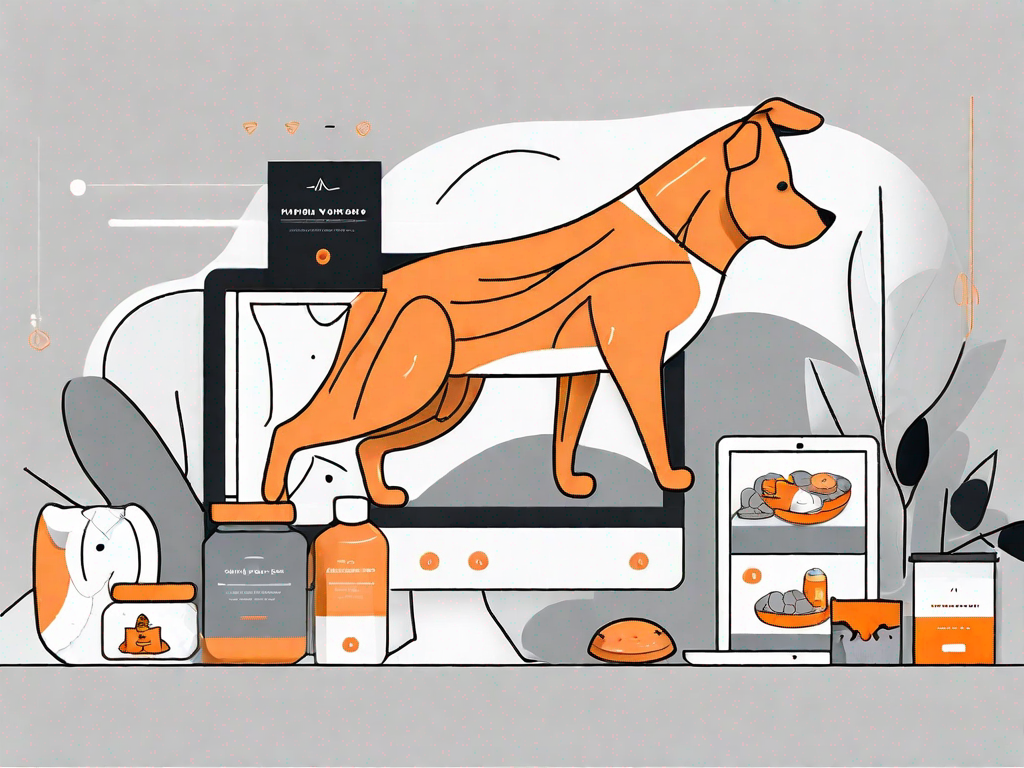.svg)
The Role of Virtual Reality in Marketing: Immersive Brand Experiences
.svg)

In today's digital age, marketing professionals are constantly seeking innovative ways to capture the attention of consumers and create memorable brand experiences. One technology that has been making waves in the marketing world is virtual reality (VR). With its ability to transport users into immersive and interactive virtual environments, VR offers a unique opportunity for marketers to engage and connect with their target audience in ways never before possible.
1. Introduction to Virtual Reality in Marketing
Understanding the concept of virtual reality is essential for marketers looking to leverage this technology to enhance their marketing strategies. At its core, VR refers to a computer-generated simulation of a three-dimensional environment that can be interacted with in a seemingly real or physical way. It typically involves the use of a headset and controllers, which allow users to navigate and interact within the virtual world.
Virtual reality has come a long way since its early days and has significantly evolved in the field of marketing. Initially, VR was primarily used in the gaming industry, but its potential in marketing soon became evident. Marketers quickly recognized that VR could be a powerful tool for creating immersive brand experiences that captivate consumers.
One of the key benefits of using virtual reality in marketing campaigns is the ability to transport consumers to unique and engaging environments. Whether it's taking them on a virtual tour of a hotel or giving them a sneak peek into an upcoming product launch, VR allows marketers to create experiences that are far more immersive and memorable than traditional advertising methods.
Imagine being able to explore a tropical paradise without leaving the comfort of your own home. With virtual reality, this dream becomes a reality. Marketers can now transport consumers to exotic locations, allowing them to experience the sights, sounds, and even the smells of distant lands. Whether it's diving into the crystal-clear waters of the Maldives or trekking through the dense rainforests of the Amazon, VR can create a sense of adventure and exploration that traditional marketing methods simply cannot match.
Furthermore, virtual reality offers marketers the opportunity to showcase products and services in a way that is both informative and entertaining. For example, imagine being able to try on different outfits from the comfort of your own home using VR technology. With a few simple gestures, you can see how different clothes fit and look on you, without the need to visit a physical store. This not only saves time but also enhances the overall shopping experience, making it more convenient and enjoyable for consumers.
Another exciting application of virtual reality in marketing is the ability to create interactive storytelling experiences. Marketers can now immerse consumers in a narrative-driven virtual world, where they can actively participate and shape the outcome of the story. This level of engagement and interactivity not only captures the attention of consumers but also creates a deeper emotional connection with the brand. By allowing consumers to become part of the story, marketers can foster a sense of loyalty and advocacy, ultimately leading to increased brand loyalty and customer retention.
Virtual reality also opens up new possibilities for event marketing. With VR technology, marketers can now host virtual events, allowing attendees to interact with each other and experience the event from the comfort of their own homes. This not only eliminates the need for physical venues but also expands the reach of the event, as anyone with a VR headset can participate. From virtual conferences and trade shows to product launches and live performances, VR events offer a cost-effective and scalable solution for marketers looking to engage with their target audience on a global scale.
In conclusion, virtual reality has revolutionized the field of marketing, offering marketers a powerful tool to create immersive and memorable experiences for consumers. From transporting them to exotic locations to showcasing products in a virtual environment, VR has the potential to transform the way brands engage with their audience. As technology continues to advance, it will be fascinating to see how virtual reality evolves and how marketers continue to push the boundaries of what is possible in the world of marketing.
Creating Immersive Brand Experiences with Virtual Reality
Designing virtual reality experiences that truly engage consumers requires careful consideration of various factors. First and foremost, the experience should align with the brand's values and messaging. It's important to create a seamless integration between the virtual environment and the brand, ensuring that users feel a strong connection to the brand throughout the experience.
Incorporating storytelling into virtual reality experiences can also be highly effective in creating emotional connections with consumers. By weaving a narrative that resonates with the target audience, marketers can evoke powerful emotions and leave a lasting impression. Whether it's immersing users in a brand's history or showcasing the impact their products or services have on people's lives, storytelling can make the virtual experience more personal and relatable.
Take, for example, a virtual reality experience designed by a luxury watch brand. In this immersive experience, users are transported to the brand's Swiss manufacturing facility, where they can witness the intricate craftsmanship that goes into creating each timepiece. Through a combination of stunning visuals, ambient sounds, and interactive elements, users can explore different stages of the watchmaking process, from the delicate art of hand-engraving to the precise assembly of intricate movements.
As users navigate through the virtual environment, they are accompanied by a virtual guide who shares fascinating stories about the brand's heritage and the passion that drives its artisans. By immersing users in the brand's rich history and craftsmanship, this virtual reality experience not only showcases the brand's values but also creates a sense of exclusivity and prestige.
Furthermore, virtual reality can be used to enhance customer interactions and provide a more personalized experience. By allowing users to customize their virtual environment or interact with virtual avatars, marketers can create a sense of agency and empowerment for the consumer. This not only strengthens the bond between the consumer and the brand but also cultivates a deeper level of engagement.
Imagine a virtual reality experience created by a high-end fashion brand. Users can not only explore the brand's latest collection in a virtual showroom but also customize their own virtual avatar to try on different outfits. With a wide range of styles, colors, and accessories to choose from, users can create their unique fashion statement and see how the brand's designs fit their individual tastes and preferences.
Moreover, the virtual reality experience can go beyond just trying on clothes. Users can virtually attend fashion shows, interact with virtual fashion influencers, and even get styling tips from renowned fashion experts. By providing such immersive and interactive features, the brand not only offers a personalized experience but also positions itself as a trendsetter and a trusted advisor in the world of fashion.
Virtual Reality and Consumer Engagement
One of the primary goals of marketing is to engage consumers and build lasting relationships. Virtual reality has the potential to revolutionize consumer engagement by providing a level of immersion and interactivity that traditional marketing methods simply cannot match.
Through virtual reality experiences, marketers can transport consumers to places they've never been and enable them to have experiences they've only dreamed of. Whether it's exploring the depths of the ocean or walking on the surface of Mars, VR allows for unparalleled escapism and adventure. By delivering extraordinary experiences, brands have a greater chance of capturing and maintaining consumer attention.
Measuring the impact of virtual reality on consumer behavior is a crucial aspect of any marketing campaign. Data analysis and tracking can provide valuable insights into consumer engagement, preferences, and buying behavior. Case studies of successful virtual reality marketing campaigns demonstrate real-life examples of how brands have effectively used VR to achieve their marketing objectives.
Overcoming Challenges in Implementing Virtual Reality Marketing
While virtual reality offers immense potential for marketers, there are several challenges that need to be taken into consideration when implementing VR into marketing strategies.
Cost is often seen as a significant barrier to adopting virtual reality campaigns. Developing high-quality VR experiences can be expensive, considering the cost of hardware, software, and content creation. However, as technology advances and becomes more accessible, the cost is expected to decrease, making VR more viable for marketing budgets of varying sizes.
Technical requirements and infrastructure are also factors that need to be carefully considered in virtual reality marketing. Ensuring that the target audience has access to the necessary hardware and software is essential for the success of VR campaigns. Additionally, providing a seamless and user-friendly experience is crucial to avoid technical issues that may hinder user engagement.
Addressing potential barriers to consumer adoption of virtual reality is another challenge that marketers must overcome. Some consumers may be hesitant to adopt VR due to concerns about motion sickness, privacy, or the need for specialized equipment. Educating consumers about the benefits and addressing their concerns can help increase acceptance and adoption of VR technology.
In conclusion, virtual reality has the power to transform marketing by creating immersive brand experiences that captivate and engage consumers. With its ability to transport users to new worlds and provide interactive experiences, VR offers a unique opportunity to connect with audiences on a deeper level. By understanding the concept of VR, designing immersive experiences, measuring consumer engagement, and addressing challenges, marketers can harness the full potential of virtual reality in their marketing strategies and pave the way for a new era of marketing innovation.
Related Posts
Let's
Let’s discuss how we can bring reinvigorated value and purpose to your brand.







.svg)